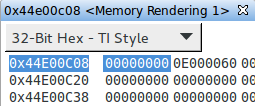When using the spreadsheet from http://processors.wiki.ti.com/index.php/Optimizing_AM335x_IO_Power_in_DeepSleep0
If the pinmux is set to gpio (MUX_MODE7) and it says the DeepPad state is OUTPUT LOW. Does that mean it will ignore the PIN_INPUT part of the pinmux?
If Pinmux Change is required how do I determine which mux mode to change it to? Especially if pinmux is already gpio...
If the pinmux is set to gpio and the spreadsheet claims the DeepPad state is OUTPUT LOW, should I set the sleep pinmux to PIN_OUTPUT?



